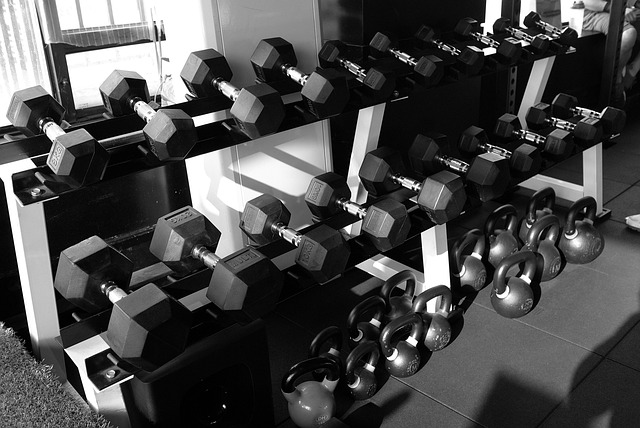In the world of cardio training, repetitive straight‑line walks are common, yet they can become monotonous and often fail to engage all muscle groups equally. Introducing a simple yet powerful variation—circumambulation, or walking in circles—adds a dynamic element that challenges the body in fresh ways. By shifting focus from forward motion to a rhythmic, rotational movement, this technique improves balance, engages core stability, and boosts overall cardiovascular benefits. It is a low‑impact, adaptable approach that can be practiced anywhere, from a quiet park to an indoor hallway, making it an accessible addition to any fitness routine.
Understanding Circumambulation
Circumambulation refers to the act of moving around a central point, creating a circular path. In the context of walking, it means turning in place or following a curved route that keeps the same axis or anchor. This motion engages the hip abductors and adductors, improves proprioception, and forces the cardiovascular system to adapt to variable angles of exertion. Unlike linear walking, circumambulation forces the body to constantly adjust posture, which enhances muscular endurance and burns calories more efficiently.
Cardiovascular Gains from Circular Walking
Studies on aerobic exercise emphasize that intensity modulation is key to stimulating heart and lung function. Circumambulation naturally varies stride length and limb placement, creating intervals of higher effort as the legs travel around a tighter radius. This intermittent load elevates heart rate, improves VO₂ max, and strengthens the heart muscle. Additionally, the rotational movement recruits stabilizing muscles, reducing the risk of overuse injuries common in straight‑line cardio.
- Improved core stability due to constant rotational torque.
- Increased calorie burn from dynamic muscle recruitment.
- Reduced joint impact through smoother, circular motion.
Scientific Foundations of the Technique
The biomechanical principle behind circumambulation lies in the concept of load distribution. When walking in a circle, the body experiences centripetal forces that require continuous muscle engagement to maintain balance. This constant demand stimulates both aerobic and anaerobic pathways, leading to higher lactate thresholds and better endurance. Moreover, the rhythmic pivoting engages the gluteus medius and minimus, which are essential for hip stability and lower‑back protection.
Practical Ways to Incorporate Circumambulation
Implementing circular walking into everyday life does not require special equipment or a large space. Start by choosing a small area—an empty parking lot, a garden pond, or an indoor hallway—and walk in a clockwise or counterclockwise pattern. Gradually increase the radius of the circle to change intensity. You can also add hand weights or resistance bands for added challenge. By varying the pace, radius, and direction, you create a micro‑interval training session that keeps the heart rate elevated.
- Begin with a 10‑minute warm‑up on a straight path.
- Transition to a 5‑minute circular session, maintaining moderate speed.
- Return to straight walking for a cooldown period.
Intensity Modulation Through Radius Variation
One of the most effective ways to adjust the workout’s difficulty is by changing the circle’s radius. A smaller radius demands quicker strides and greater hip rotation, raising heart rate and muscle engagement. A larger radius allows for a slower pace and a steadier breathing pattern, making it ideal for recovery or beginners. By alternating between tight and wide circles, you create a natural high‑low pattern similar to high‑intensity interval training (HIIT).
- Start with a wide circle for a 3‑minute steady walk.
- Switch to a tight circle for 1 minute of brisk movement.
- Repeat the cycle three times before cooling down.
Common Pitfalls and How to Avoid Them
Despite its simplicity, circumambulation can lead to missteps if not executed correctly. Pay attention to the following issues:
- Poor Posture: Keep shoulders relaxed and core engaged to prevent excessive spinal flexion.
- Uneven Stride: Ensure each foot lands softly and evenly to avoid knee strain.
- Ignoring the Perimeter: Stay within a consistent radius; straying too far reduces the rotational benefit.
- Overexertion: Monitor heart rate; the goal is sustainable intensity, not a single burst of exhaustion.
Correcting these habits enhances safety and maximizes cardiovascular gains.
Integrating Circumambulation into a Weekly Plan
To reap lasting benefits, incorporate circular walking into a balanced cardio schedule. A sample weekly plan might look like this:
- Monday: 30‑minute steady walk, followed by a 10‑minute circular session.
- Wednesday: 20‑minute HIIT with alternating tight and wide circles.
- Friday: 45‑minute recreational walk, concluding with a 15‑minute gentle circle for recovery.
- Saturday: Optional light activity—stretching or yoga—to support flexibility.
- Sunday: Rest or active recovery (walking or walking in a park).
Consistency, combined with gradual progression in radius and pace, yields significant improvements in endurance, weight management, and overall cardiovascular health.
Beyond Walking: Other Circumambulation Activities
The principle of rotating around a central point can be extended to numerous exercises. Adding resistance bands around the waist, performing jumping jacks in circles, or even practicing tai chi forms all harness the same dynamic movement. These variations keep the routine fresh and further engage stabilizing muscles, promoting joint health and functional fitness.
Tracking Progress and Maintaining Motivation
Measuring success is crucial for staying motivated. Keep a simple log that records:
- Date and duration of each session.
- Radius of circles (small, medium, large).
- Heart rate range during the workout.
- Subjective effort level on a scale of 1–10.
Review the data weekly to identify trends—such as improved heart rate control or extended duration—and celebrate milestones. Sharing progress with friends or joining a local walking group can also provide social support and accountability.
Circumambulation offers a fresh, engaging way to boost cardio training without relying on bulky equipment or expensive facilities. By embracing circular walking, you invite dynamic movement into your routine, challenge your cardiovascular system, and protect your joints. The beauty of this approach lies in its simplicity and adaptability; it can fit into busy schedules, varied fitness levels, and diverse environments. Start today by carving a small circle in your living room or local park, and let the rhythmic motion carry you toward a healthier, more resilient body.


